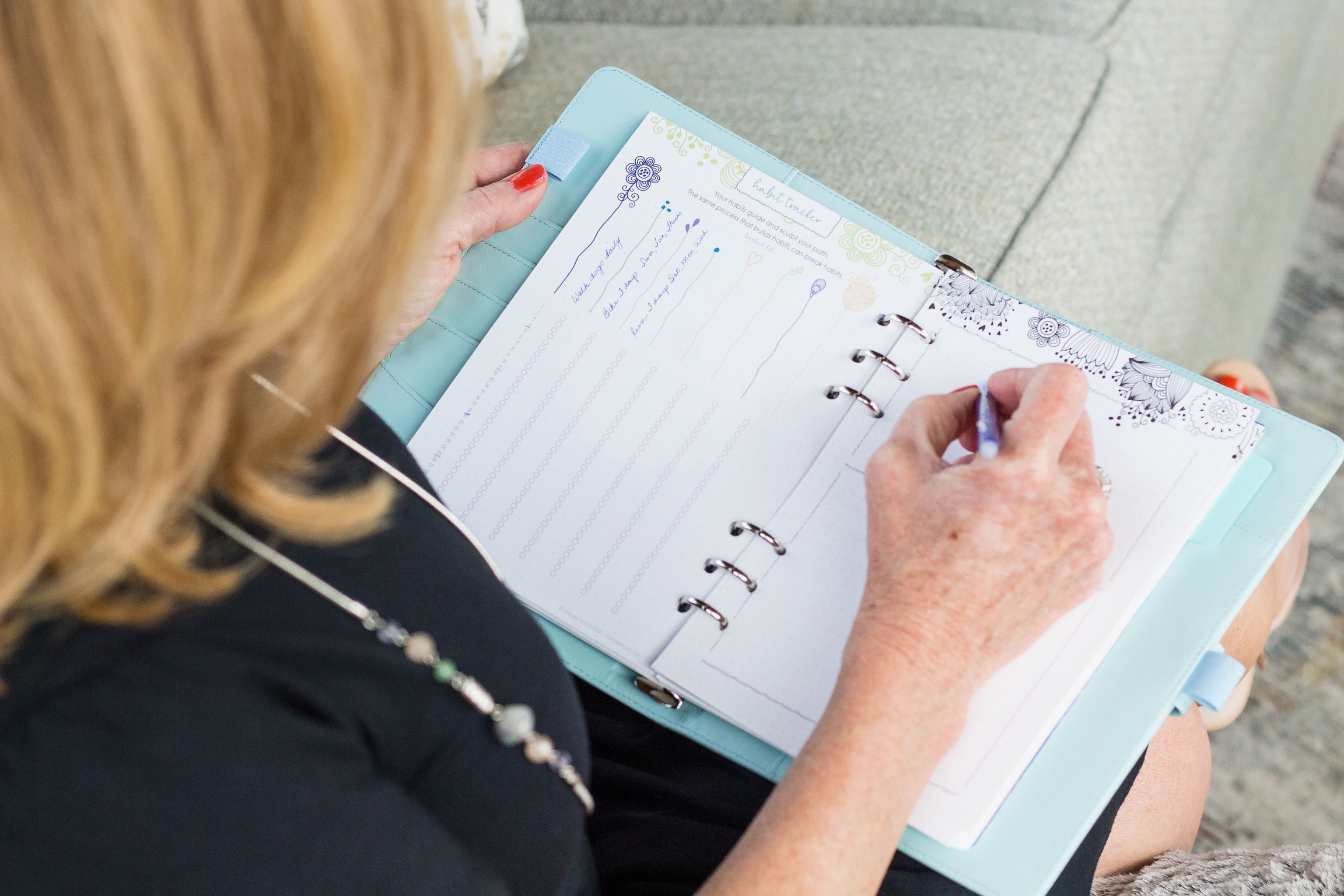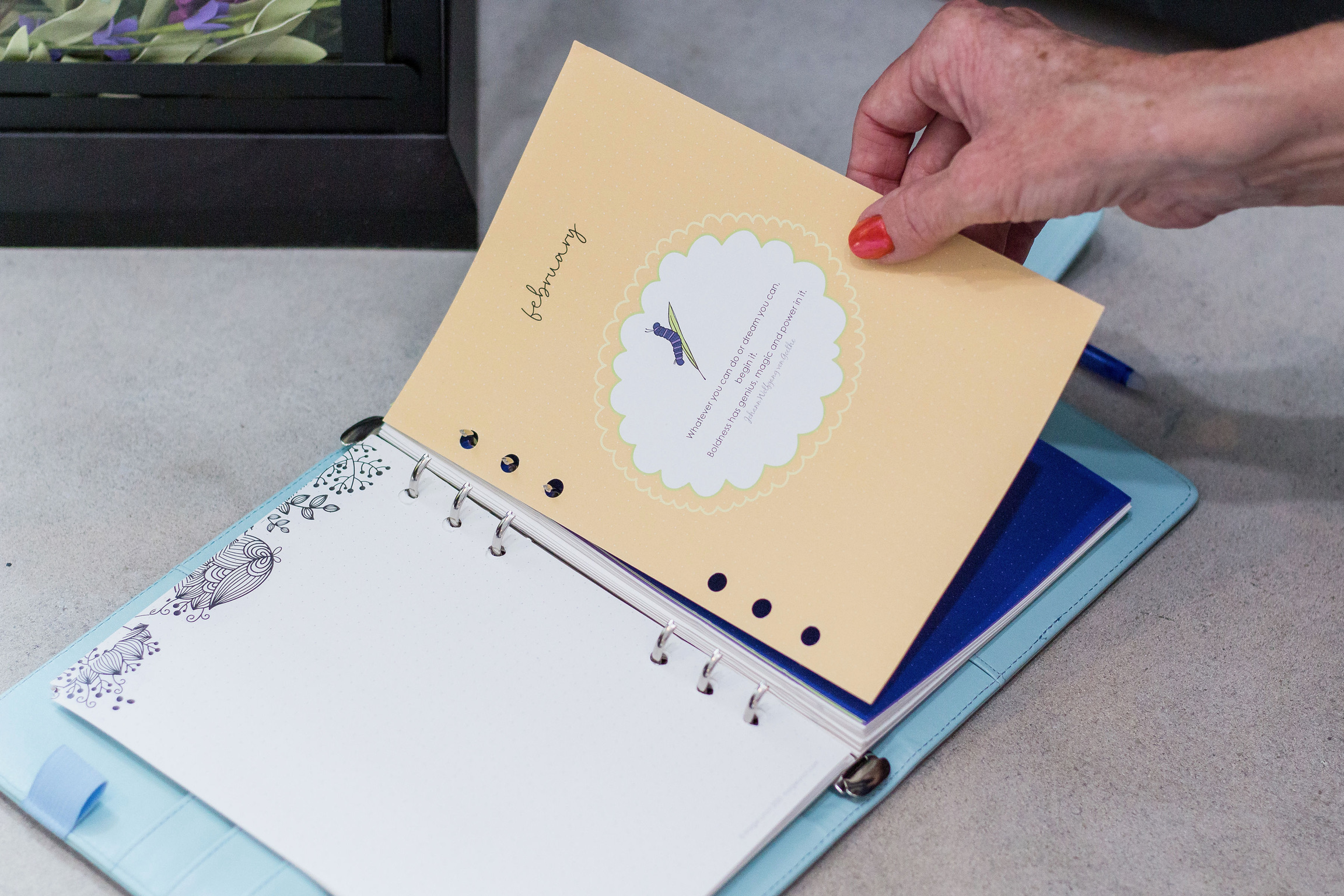Bullet journaling is an analog organization system created by Ryder Carroll, who originally developed it to help manage his ADHD. It combines elements of mindfulness, productivity, and self-discovery in one cohesive system that allows you to track the past, organize the present, and plan for the future.
At its core, bullet journaling uses bullet points, symbols, and short sentences to keep information concise and manageable. The system is centered around the concept of “rapid logging” – a method of quickly capturing information using a language of bullets and symbols to indicate different types of entries and their status.
Why Bullet Journaling?
Complete Flexibility and Customization
One of the most appealing aspects of bullet journaling is its flexibility – your bullet journal can fill any need you have. People have used the method to track goals, plan their way out of debt, plan daily activities, journaling, and much more. Unlike pre-designed planners, you create exactly what you need, when you need it.
Mental Health and Mindfulness Benefits
Beyond practical organization, bullet journaling offers numerous mental health advantages. The process helps declutter the mind by writing down tasks and thoughts, making it easier to focus on the present. The act of writing things down has been shown to have psychological benefits, including improving memory, boosting learning, and decreasing distractibility.
Analog Alternative in a Digital World
By being mostly analog, the Bullet Journal method minimizes distractions, helps users stay focused, and encourages reflection. Many people appreciate having a break from screens and digital notifications.
Visualization of Progress
Bullet journaling is particularly effective because of how visually impactful it is. It makes sure the important parts of your to-do list stand out and grab your attention when necessary. This visual approach to organization makes it easier to see progress over time.
Integration of Creative Expression
For many people, bullet journaling serves dual purposes: organizational tool and creative outlet. The freedom to design and decorate a bullet journal fosters creativity, providing a fun and engaging outlet for self-expression. Many people use their journals for doodling, coloring, and other artistic pursuits, which can be therapeutic.
Intentional Living
The ultimate purpose of bullet journaling is to lead a more intentional life where the things that you do, give your attention to, and spend time on are actually things that matter most to you – helping you not waste time, energy, and emotions on what doesn’t matter.
The BuJo Pathway Planner

This is where the BuJo Pathway Planner offers unique value compared to traditional bullet journaling. While traditional bullet journaling requires users to create their own layouts (which can be time-consuming), my planner provides professionally designed spreads that save significant time while still maintaining the benefits of the bullet journal system.
The Balance my Pathway Planner Offers
The Pathway Planner addresses a key tension in bullet journaling: the desire for structure versus the time investment required. By providing professionally designed “done-for-you” layouts that are most common (and time consuming to create) while still maintaining space for customization and creativity, it offers users the best of both worlds – the organizational benefits of bullet journaling without the significant time investment typically required.
This balance is particularly valuable for busy individuals like you who want the benefits of a bullet journal system but don’t have hours to create elaborate spreads from scratch. The Pathway Planner allows you to focus on using the system rather than building it.
Click here to learn more about the BuJo Pathway Planner created by Margie Lynch.

